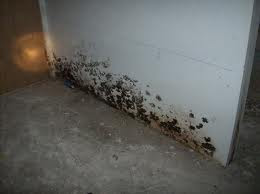Lots of owners find out they have an uninvited visitor shacking up in their basement. Ever seen little white fuzzy stuff on your concrete basement flooring?
Mold removing on concrete can take many forms. Concrete is a porous substance, and your basement floor gets a number of moisture from the bottom beneath it.
Often, concrete foundations have a moisture barrier. However, in some instances the moisture barrier is previous or damaged, or it could not have been correctly installed.
In arid locations like Southern California, Arizona and high altitudes, you might not have a moisture barrier built into your home. You normally do not want it, but when you have a heavy rain or a spell of humid climate, you are prone to get that nasty Mold rising on your concrete floors.
In case you have Mold growing on basement tiles or below basement carpeting, the trigger could be the concrete underneath. It doesn't matter what your Mold downside, you must remove it out of your concrete.
A Little Bleach And Elbow Grease
If you happen to've acquired a little Mold growing in your concrete surfaces, it's easy sufficient to wash up. For little bits of Mold right here on there, use an answer of water and bleach. four elements water to 1 part bleach is normally the really useful formula. You may also discover cleaning products designed particularly for Mold Removal.
Scrub at the Moldy spots together with your bleach and water till it's gone. Be careful - that bleach is harmful stuff. Make sure you have some good rubber gloves and be careful that the bleach would not come into contact with anything else.
Seal It Up
If you have extra serious Mold issues and a very good scrubbing will not do away with it, you may try sealing the cracks. Chances are, the appearance of Mold on your concrete surfaces is a symptom of a much bigger structural drawback in your home. There may be cracks within the concrete or walls that allow moisture to return into the house.
Go to the ironmongery store and look for a waterproofing compound made for this particular purpose. Should you're totally uncertain, discuss to the clerk and clarify your problem. What you need is one thing particularly designed to seal up cracks in your concrete and walls. The compound will come with detailed directions on tips on how to use it.
Call The Contractor
If you have water sicking up from below your basis into the concrete, you have bought a much greater problem. It's possible you'll need to call a professional.
What you'll need to do is take off all of the flooring so the original concrete is exposed. This is something you can most likely do your self, but it is best to ensure to maintain yourself safe. Any time you are coping with remove mold and mildew, be sure to have good gloves and a masks, and be sure that the Mold does not get into another elements of the house. Even for those who're working within the basement, be sure you have some ventilation going.
Now, you'll have to have a new prime layer of concrete poured. It must be no less than one inch thick. Guantee that the new cement is combined with a waterproofing compound that will keep down its moisture level.


